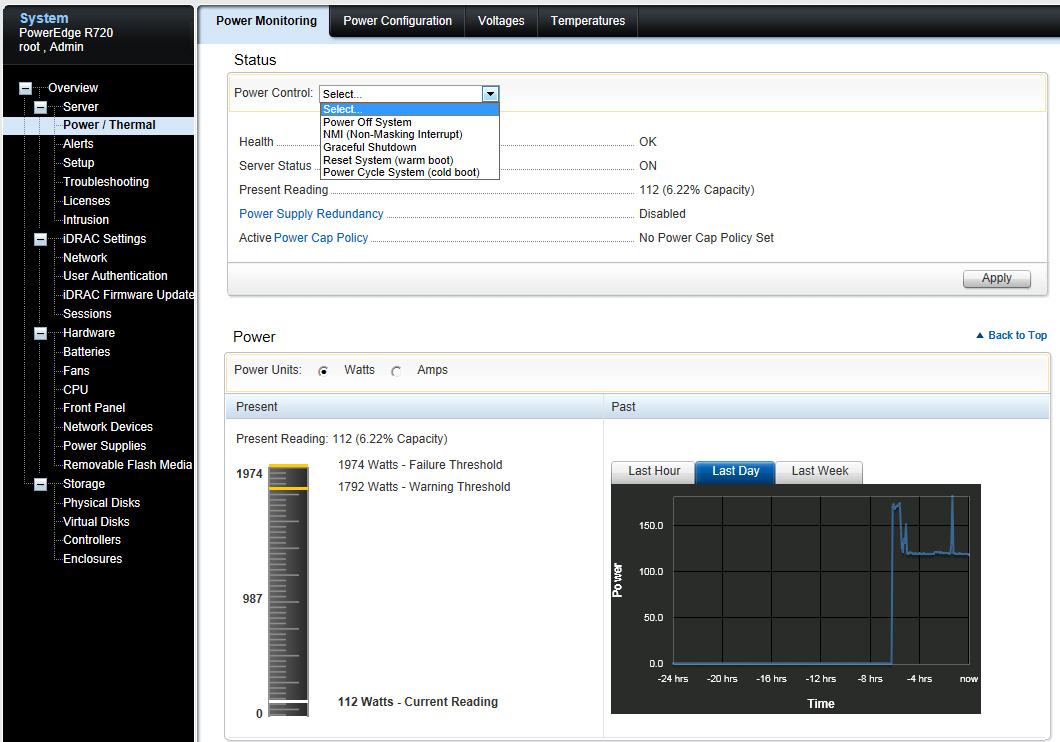Dell PowerEdge R720 review
Dell’s new PowerEdge R720 combines Intel’s eagerly awaited Xeon E5-2600 processors with a wealth of new features. Is this the best-designed 2U rack server on the market? Read Dave Mitchell’s exclusive review to find out.
As a general-purpose 2U rack server, the PowerEdge R720 looks capable of running any application that can be thrown at it. Its massive memory capacity and hypervisor redundancy make it ideal for virtualisation, while the storage capacity, expansion potential and remote management are excellent. Plus, of course, it supports Intel’s very latest Xeon E5-2600 processors.

Dell's optional dual SD memory card controller has been redesigned and fits into a dedicated slot at the back of the chassis. A mirrored mode provides hypervisor redundancy by automatically keeping an onboard copy of the primary boot media in case it fails.

The new system setup menu provides direct access to the server, the iDRAC7 and other devices.
Internal design is exemplary, and Dell has avoided wasted space by arranging the CPU and DIMM sockets in a neat row across the centre of the chassis. These are supported by a bank of six hot-plug cooling fans in front and we found noise levels to be extremely low.
Dell's Fresh Air initiative also allows data centre environments to cut cooling costs by running at higher temperatures. The R720 has been certified by Dell to run reliably at up to 45C.
Power choices are good too, with our review system supplied with a pair of platinum-rated 750W hot-plug supplies. Dell also offers 495W models for lighter duties, or higher-power 1100W supplies.
The E5-2680 Xeons in the review system have a comparatively high 130W TDP but power consumption isn't excessive. With Windows Server 2008 R2 in idle, we measured a draw of 120W and this only rose to 358W under maximum load from the SiSoft Sandra benchmarking app.

Remote power monitoring and management features have been improved significantly.
Sign up today and you will receive a free copy of our Future Focus 2025 report - the leading guidance on AI, cybersecurity and other IT challenges as per 700+ senior executives
Expansion options are extensive, with seven PCI-e Gen 3 slots, with room for one x16 and three x8 full-height, full length cards, plus three x8 half-length, half-height cards. The PowerEdge R720 is also suitable for graphics intensive applications, since it supports two double-width GPU cards, including NVIDIA's Tesla.
The Sandy Bridge-EP design has the IOH (I/O Hub) moved on-chip and provides forty PCI-e lanes per socket. This new architecture means both CPUs sockets in the R720 must be populated to use all seven slots and, with one CPU, there are three slots to play with.
Dave is an IT consultant and freelance journalist specialising in hands-on reviews of computer networking products covering all market sectors from small businesses to enterprises. Founder of Binary Testing Ltd – the UK’s premier independent network testing laboratory - Dave has over 45 years of experience in the IT industry.
Dave has produced many thousands of in-depth business networking product reviews from his lab which have been reproduced globally. Writing for ITPro and its sister title, PC Pro, he covers all areas of business IT infrastructure, including servers, storage, network security, data protection, cloud, infrastructure and services.
-
 ‘1 engineer, 1 month, 1 million lines of code’: Microsoft wants to replace C and C++ code with Rust by 2030 – but a senior engineer insists the company has no plans on using AI to rewrite Windows source code
‘1 engineer, 1 month, 1 million lines of code’: Microsoft wants to replace C and C++ code with Rust by 2030 – but a senior engineer insists the company has no plans on using AI to rewrite Windows source codeNews Windows won’t be rewritten in Rust using AI, according to a senior Microsoft engineer, but the company still has bold plans for embracing the popular programming language
By Ross Kelly Published
-
 Google drops $4.75bn on data center and energy firm Intersect
Google drops $4.75bn on data center and energy firm IntersectNews The investment marks the latest move from Google to boost its infrastructure sustainability credentials
By Nicole Kobie Published
-
 OpenAI says prompt injection attacks are a serious threat for AI browsers – and it’s a problem that’s ‘unlikely to ever be fully solved'
OpenAI says prompt injection attacks are a serious threat for AI browsers – and it’s a problem that’s ‘unlikely to ever be fully solved'News OpenAI details efforts to protect ChatGPT Atlas against prompt injection attacks
By Nicole Kobie Published
